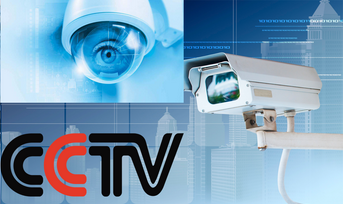Introduction: In KCSE 2018, a total of 660,204 candidates sat for the examination. Some 338,628 students who sat for the examination were male while 321,576 were female. In terms of percentage, the representation was 51.29% for the male and 48.71% for the female students. Candidates with special needs were 1,499 in total.
Gender distribution: In comparison to KCSE 2017, 18 counties had more female than male candidates. These counties included Kwale, Uasin Gishu, Tharaka Nithi, Kirinyaga, Nandi, Meru, Kakamega, Machakos, Elgeyo Marakwet, Laikipia, Nyandarua, Muranga, Vihiga, Taita Taveta, Makueni, Kitui, Kiambu and Kisumu (Njeru, 2018). Counties in the Norther Frontier such as Wajir and Garissa had very low numbers of female candidates who in most cases were less by half the number of male candidates (Adhiambo, 2018). Remarkably, Kiambu County had the greatest improvement in terms of female candidates. In 2017, the county had 14,070 as compared to this year’s 15,856 female candidates. Vihiga and Meru came in second and third respectively. Homa Bay County recorded the highest decline of female candidates alongside Migori.
School performance: For the second year running, Pangani Girls Secondary School produced 2018’s top student, namely Julliet Otieno, who scored an A of 87.664 points (Wanzala, 2018). Maseno school’s James Kaluna came second while Edwin Otieno Ouko of Light Academy was third. Another academic giant, Moi High School Kabarak produced the fourth best candidate, Ian Duncan Mwangi. Humphrey Rasugu, also from Maseno was fifth.
After an introduction of examination reforms, 2018 unlike previous years has seen a resurgence of traditional top performing schools. These include Alliance High School, Moi High School Kabarak, Maseno and Mang’u High School. Strathmore school was the top school nationally followed by Alliance High School and Alliance Girls High School.
Students’ Performance: The number of candidates who scored A was 315 and C+ which is the minimum grade for university qualification was 90,377. 3,417 candidates scored A-, 8,268 B+ and 16,403 B plain (Oduor, 2018). Another 26,156 could manage B- 35,818 attaining C+. In the languages (English and Kiswahili), girls performed better. Similarly, they outperformed boys in CRE, Art and Design, Metalwork and Home Science (Adhiambo, 2018). Of the 1,499 candidates with special needs, 3 scored A-, 6 B+, 8 B, 35 B- and 36 C+. In general, 88 candidates with special needs met the minimum university requirement of grade C+.
Further analysis shows that candidates with low KCPE marks four years earlier scoring high grades in KCSE. James Kamau’s score at KCPE was 186 but attained B- of 40.31 points. In this category, Josephat Mwangi is the best having scored A- in KCSE in comparison to 278 marks at KCPE level. Kyulu Richard is second with a B+ and 257 marks in his KCPE. Also scoring a B+ and in third position is George Mburu who scored 279 in KCPE.
Conclusion: In comparison to 2017, the number of candidates in 2018 increased. Female candidates were more than boys in almost half the counties. Additionally, they female students had better performance than boys in seven subjects which indicate a step towards improving gender parity in Kenya. 2018 also saw the resurgence of old academic giants such as Strathmore School, Moi High school Kabarak among others.
Sources
Njeru, B. (2018, December 21). Juliet Otieno from Pangani Girls is the best candidate in the 2018 KCSE exam. Retrieved from: https://www.standardmedia.co.ke/article/2001307066/juliet-otieno-is-this-year-s-top-kcse-candidate
Wanzala, O. (2018, December 22). Pangani produces the best candidate for the second year running. Retrieved from: https://www.nation.co.ke/news/education/Pangani-produces-best-candidate-for-the-second-year-running/2643604-4906102-vwkgi8z/index.html
KCSE results 2018: sleeping giants bounce back (2018, December 22). Retrieved from: http://www.mediamaxnetwork.co.ke/494215/kcse-results-2018-sleeping-giants-bounce-back/
Adhiambo, M. (2018, December 22). Girls perform better in metal work and male dominated subjects. Retrieved from: https://www.standardmedia.co.ke/article/2001307115/girls-perform-better-in-2018-kcse
Oduor, A. (2018, December 22). Pangani and Alliance top in Nairobi as girls beat boys. Retrieved from: https://www.standardmedia.co.ke/article/2001307109/pangani-and-alliance-top-in-nairobi-as-girls-beat-boys

 Marxtech Digital Solutions
Marxtech Digital Solutions Today, more than ever before, personal and property security has become central and constitute a major component of best institutional management practices. Schools, much more than other corporate institutions need robust security systems to ensure both infrastructural and human resource safety. Thus, CCTV installation should be a fundamental component within a school infrastructure since it can enhance effective teaching and learning. This article briefly highlights the benefits of CCTV systems in schools.
Today, more than ever before, personal and property security has become central and constitute a major component of best institutional management practices. Schools, much more than other corporate institutions need robust security systems to ensure both infrastructural and human resource safety. Thus, CCTV installation should be a fundamental component within a school infrastructure since it can enhance effective teaching and learning. This article briefly highlights the benefits of CCTV systems in schools. Marxtech Digital Solutions
Marxtech Digital Solutions